Doktor Klawonn
Harmless

Posts: 29
Registered: 20-11-2010
Location: Europe
Member Is Offline
Mood: No Mood
|
|
Electrolysis of copper chloride
Introduction
Electrolysis of copper (II) chloride is a basic experiment in school chemistry. The products are easy to show and the sum equation of the reaction is
simple.
Chemicals and apparatus
- U tube
- carbon electrodes
- copper (II) chloride
- sodium iodide
- destilled water
- stand
- wire
- electric power supply
Warning
In this experiment, chlorine gas may escape.
Experimental
Copper (II) chloride is dissolved in destilled water.[1] The resulting solution is filled into a U-tube to two thirds height.[2]
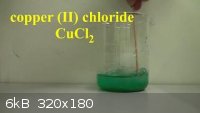 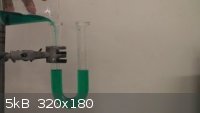
Carbon electrodes are placed into the sides of the U-tube. The electrodes are connected to the power supply.
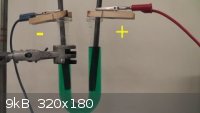
Chlorine gas is evolved at the anode. The gas turns a solution of sodium iodide brown.[3]
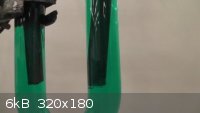 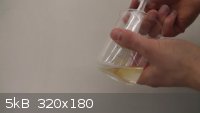
Copper is deposited at the catode.
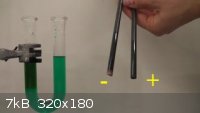
Sum reaction is:
CuCl<sub>2</sub> --> Cu + Cl<sub>2</sub>
Reaction of chlorine gas with sodium iodide solution:
Cl<sub>2</sub> + 2 NaI --> 2 NaCl + I<sub>2</sub>
Remarks
[1] The use of tap water may result in a turbid solution.
[2] This leaves room for the electrodes and for chlorine gas, which can then be collected from the anode.
[3] Other reactions to show the chlorine are possible.
Links
- This experiment in a video
|
|
|
jamit
Hazard to Others
  
Posts: 375
Registered: 18-6-2010
Location: Midwest USA
Member Is Offline
Mood: No Mood
|
|
what were you trying to do in this experiment? What would have happened if you continued the electrolysis until the very end when all the copper II
chloride would be consumed? Would it produce copper II chlorate??
|
|
|
Doktor Klawonn
Harmless

Posts: 29
Registered: 20-11-2010
Location: Europe
Member Is Offline
Mood: No Mood
|
|
This is a basic experiment in electrochemistry at school. The purpose is to understand concepts like ions and atoms or the effect of electric current
on chemicals.
Quote: Originally posted by jamit  |
What would have happened if you continued the electrolysis until the very end when all the copper II chloride would be consumed? Would it produce
copper II chlorate??
|
The copper would deposit on the negative electrode (catode) and chlorine gas would be generated at the positive electrode (anode) untill the
conductivity of the solution drops considerably to stop the electrolysis. There will be no chlorate produced.
|
|
|